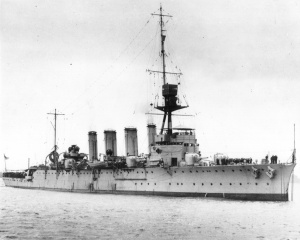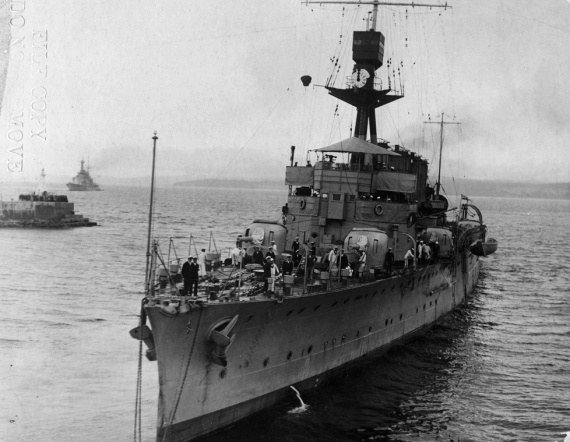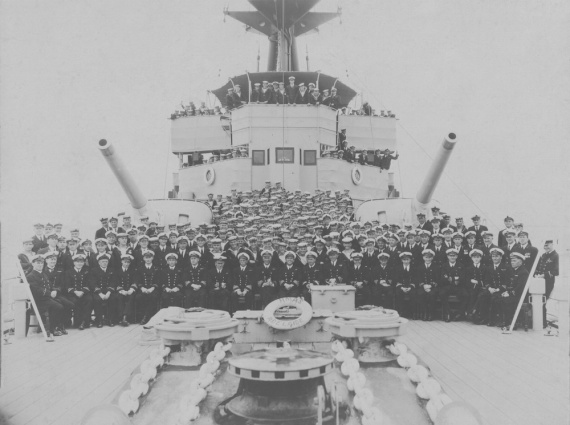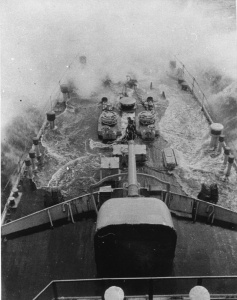HMAS Adelaide (I)
| Class |
Modified Town Class |
|---|---|
| Type |
Cruiser |
| Nickname |
HMAS Longdelayed |
| Motto |
Ut Prosint Omnibus Conjuncti (United for the Common Weal) |
| Builder |
HMA Naval Dockyard, Cockatoo Island, Sydney |
| Laid Down |
20 November 1915 |
| Launched |
27 July 1918 |
| Launched by |
Lady Helen Munro Ferguson, wife of Governor-General |
| Commissioned |
5 August 1922 |
| Decommissioned |
13 May 1946 |
| Fate |
Sold and broken up |
| Dimensions & Displacement | |
| Displacement | 5035 tonnes |
| Length | 140.97 metres |
| Beam | 15.16 metres |
| Draught | 5.99 metres |
| Performance | |
| Speed | 24.8 knots |
| Complement | |
| Crew | 462 |
| Propulsion | |
| Machinery | Parsons turbines, twin screws, 25,000 shp |
| Horsepower | 25,000 |
| Armament | |
| Guns |
|
| Other Armament |
|
| Awards | |
| Battle Honours | |
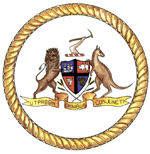
HMAS Adelaide (I) was an improved version of the 'Chatham' group of the British Town Class Light Cruisers. The ship was of the same basic design as HMA Ships Brisbane (I), Melbourne (I) and Sydney (I). She was originally equipped to burn both coal and oil fuel.
Fitting out and completion were very seriously delayed due to the loss by enemy action of important forgings for the turbines and other machinery parts which could not, at that time, be made in Australia. Replacement, because of the war conditions, took over two years. The decision to incorporate extensive modifications as a result of the war experience of other ships resulted in further delays. "In fact, Adelaide (I) for a time was known as HMAS 'Long-Delayed'." (RG Parker, Cockatoo Dockyard, Thomas Nelson (Australia) Ltd, West Melbourne, 1977).
Adelaide (I) commissioned at Sydney on 5 August 1922 under the command of Captain JB Stevenson RAN. After trials and working up practices at Jervis Bay she became an active unit of the RAN and cruised on the Australia Station until 18 February 1924.
After refitting in Sydney, Adelaide (I) joined the flag of Vice Admiral Commanding Special Service Squadron Royal Navy on 18 April 1924 and left Sydney for Wellington on 20 April. She accompanied the battle cruisers throughout the remainder of their worldwide cruise and reached Portsmouth on 28 September 1924, having called at Wellington, Napier, Auckland, Suva, Honolulu, Victoria (BC), Vancouver, San Francisco, Panama, Colon, Jamaica, Halifax, Quebec, Topsail Bay and Conception Bay en route. Adelaide (I) was the first RAN ship to pass through the Panama Canal.
After three months service in British waters, Adelaide (I) departed Portsmouth on 10 January 1925 and returned to Australia via the Mediterranean, Colombo, Singapore and Thursday Island, finally reaching Sydney on 7 April 1925 and rejoining the Australian Squadron.
In October 1927 a request from the High Commissioner for the Western Pacific to the Secretary of State for the Colonies, for warships' protection in the Solomon Islands, as a consequence of a murder by natives of a District Officer, a cadet, and fifteen native police at Sinarango (Port Diamond), Malaita, resulted in Adelaide (I) being hastily despatched from Sydney.
The ship, under the command of Captain GC Harrison RN, left Sydney for Tulagi on 10 October 1927, arriving on 14 October, and immediately sent ashore a landing party consisting of one officer and sixteen ratings, for local protection. With the Resident Commissioner on board, Adelaide (I) then visited Sio Harbour and Port Diamond, where she remained from 16 October until 16 November. On the morning of 17 October three platoons were landed at Sinarango and established three base camps from which locally enrolled troops and police operated in their search for the natives responsible for the massacre. Adelaide (I) departed the Solomons area on 18 November and arrived in Sydney on 23 November.
After further cruises around the Australian coast, Adelaide (I) paid off into reserve at Sydney on 27 June 1928.
After more than ten years in reserve Adelaide (I) was taken in hand in 1938 for an extensive refit and modernisation at Cockatoo Island Dockyard. The refit, which was completed in March 1939, included conversion to burn oil fuel only, involving removal of the two forward boilers, the forward funnel and uptakes, and the construction of additional oil fuel tanks. Several alterations were made to the armament, including removal of one 6-inch gun, the 3-inch anti-aircraft gun and the torpedo tubes. (The 12-pounder gun had been removed in 1937). Three 4-inch anti-aircraft guns were fitted and the gunnery control positions were rearranged.
Adelaide (I) recommissioned on 13 March 1939 under the command of Captain HL Howden RAN, and, after trials and practices proceeded from Sydney to participate in trade defence exercises in company with units of the Australian Squadron, the New Zealand Squadron, mercantile marine and aircraft of the RAAF. These exercises were completed in April 1939. Adelaide (I) returned to Sydney and paid off to reserve on 17 May 1939, her crew being transferred to SS Autolycus on 15 May, for passage to England to commission HMAS Perth (I).
On 1 September 1939 Adelaide (I) commissioned for war service under the command of Captain HA Showers RAN, and operated on the Australian coast for defence of trade.
On 3 September 1940, while proceeding to Brisbane from Sydney en route to New Caledonia, Adelaide (I) was in collision with SS Coptic of the Shaw Savill and Albion Line. Although both ships avoided major damage, this collision resulted in a court case in 1947 when the owners of Coptic sued the Commonwealth for £35,000 damages.
After the capitulation of France, the Vichy Government made a very strong bid to establish a Vichy regime in New Caledonia, despite a predominant Free French following amongst the population. Australia was very interested in this move, as the threat of having a hostile population in a covering position on the east coast of Australia was very serious, and one which could not be tolerated.
The Dumont d'Urville was in port with a pro-Vichy Captain in command. The commissioners found that no De Gaulle Committee had been formed, although the majority of the people were for De Gaulle. Adelaide (I) arrived at Vila (New Hebrides) on 7 September 1940 and remained there until 16 September when she departed for Noumea escorting the Norwegian tanker Norden. Aboard Norden was the Temporary Governor of New Caledonia, Commissioner-General of Western Pacific and High Commissioner of New Hebrides appointed as such by General De Gaulle.
Adelaide (I) and Norden arrived at Noumea on 19 September to find that the pro-Vichy authorities had practically declared martial law, and that the city was full of the De Gaulle supporters. The crowd, which numbered several thousand, marched to Government House and demanded the Governor's resignation in favour of the De Gaulle appointee. The Governor finally agreed to permit the new appointee to land, which he did at noon, and Adelaide (I) withdrew to patrol off the harbour entrance, with the object of inspiring confidence ashore, exercising restraint on Dumont d'Urville, and maintaining mobility.
The crowd escorted the De Gaulle appointee to Government House, and after consultation it was agreed that the pro-Vichy Military Governor would hand over at 1500 on 19 September. After protracted negotiations and much diplomacy, Dumont d'Urville sailed for Indo-China on 25 September 1940 and the situation ashore gradually became normal. Adelaide (I) departed Noumea in October and arrived back in Sydney on 8 October 1940.
From then until May 1942 Adelaide (I) carried out patrols, convoy escort and shipping protection duties on the Australia Station. The ship was under refit at Garden Island from May to July 1942. Work carried out during the refit included the fitting of six 20mm Oerlikon guns. After completion of the refit Adelaide (I) was based at Fremantle for convoy and escort duty in the Indian Ocean.

